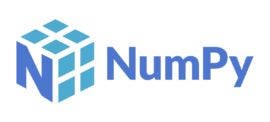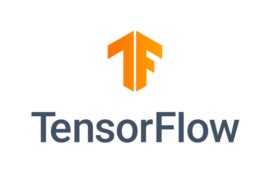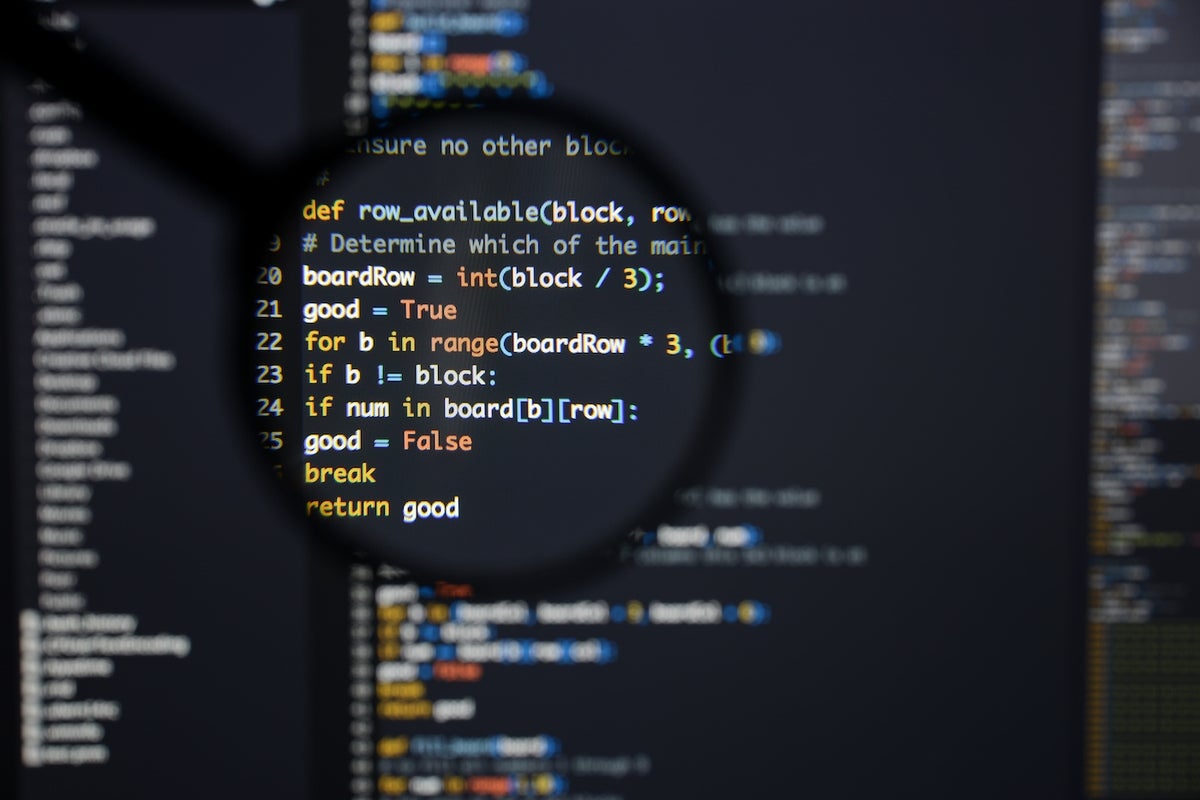- NumPy: NumPy
- SciPy: SciPy
- TensorFlow: TensorFlow
- Keras: Keras
- PyTorch: PyTorch
- Scikit-learn: Scikit-learn
- Pandas: Pandas
A lot of software developers are drawn to Python due to its vast collection of open-source libraries. Lately, there have been a lot of libraries cropping up in the realm of Machine Learning (ML) and Artificial Intelligence (AI). These libraries can be readily employed by programmers of all levels for tasks in data science, image and data manipulation, and much more. This programming tutorial will shed some light on why Python is the preferred language for Machine Learning and AI as well as list some of the best ML and AI libraries to choose from.
Why choose Python for AI development?
Lead developer for Numerical Python and Pyfort, Paul Dubois, once stated that “Python is the most powerful language you can still read.”. Other qualities that have helped propel Python to its current station is its versatility and flexibility, which allows Python to be used alongside other programming languages when needed, including powerhouses like Java and C#. On top of that, Python can operate on nearly all OS and platforms on the market.
That might explain Python’s enduring popularity among developers, but why are so many of them choosing Python to work with ML and AI libraries? For starters, the sheer number of ML and AI libraries that are available means that developers can count on finding one for whatever problem needs solving. Moreover, being an Object-oriented programming (OOP) language, Python lends itself particularly well to efficient data use and manipulation.
Here are a few more reasons why Python is among the top programming languages for Machine Learning, Deep Learning, and Artificial Intelligence:
- Being free and open-source makes Python community friendly and guarantees improvements in the long run.
- Exhaustive libraries ensure there is a solution for every problem.
- Smooth implementation and integration make it accessible for people with varying skill levels.
- Increases productivity by reducing the time to code and debug.
- Can be used for Soft Computing and Natural Language Processing as well.
- Works seamlessly with C and C++ code modules.
Now that we have discussed why Python is one of the top programming languages, the rest of this article will present some of the best Python libraries for machine learning and AI.
SEE: How to become a Machine Learning Engineer cheat sheet
NumPy

Formerly known as “Numeric”, NumPy was the brainchild of Jim Hugunin, along with contributions from several other developers. In 2005, NumPy was officially born when Travis Oliphant incorporated features of the competing Numarray into Numeric, with extensive modifications. Today, NumPy is completely open-source and has many contributors. It is also widely regarded as the best Python library for Machine Learning and AI.
NumPy is mostly utilized by data scientists to perform a variety of mathematical operations on large, multi-dimensional arrays and matrices. NumPy arrays require far less storage area than other Python lists, and they are faster and more convenient to use, making it a great option to increase the performance of Machine Learning models without too much work. Another attractive feature is that NumPy has tools for integrating C, C++, and Fortran code.
Some of NumPy’s other features that make it popular amongst the scientific community include:
- Support for mathematical and logical operations
- Shape manipulation
- Sorting and Selecting capabilities
- Discrete Fourier transformations
- Basic linear algebra and statistical operations
- Random simulations
- Support for n-dimensional arrays
SciPy

NumPy (see above) is so popular that several libraries are based on it, including SciPy. Like its inspiration, SciPy is also a free, and open-source library. SciPy is geared towards large data sets, as well as the performing of scientific and technical computing against those data sets. SciPy also comes with embedded modules for array optimization and linear algebra, just like NumPy. Playing a key role in scientific analysis and engineering, SciPy has grown to become one of the foundational Python libraries.
The allure of SciPy is that it takes all of NumPy’s functions and turns them into user-friendly, scientific tools. As such, it is often used for image manipulation and provides basic processing features for high-level, non-scientific mathematical functions.
The main features of SciPy include:
- User-friendly
- Data visualization and manipulation
- Scientific and technical analysis
- Computes large data sets
TensorFlow

TensorFlow is a free and open source library that is available for Python, JavaScript, C++, and Java. This flexibility lends itself to a wide range of applications in many different sectors. Developed by the Google Brain team for internal Google use in research and production, the initial version was released under the Apache License 2.0 in 2015. Google released the updated version of TensorFlow, named TensorFlow 2.0, in September 2019.
Although TensorFlow can be used for a range of tasks, it’s particularly adept at the training and inference of deep neural networks. Using TensorFlow, developers can create and train ML models on not just computers but also mobile devices and servers by using TensorFlow Lite and TensorFlow Serving. These alternatives offer the same benefits but for mobile platforms and high-performance servers.
Some of the areas in ML and DL where TensorFlow excels are:
- Handling deep neural networks
- Natural Language Processing
- Partial Differential Equation
- Abstraction capabilities
- Image, Text, and Speech recognition
- Effortless collaboration of ideas and code
Keras

Keras is a popular open-source neural network library for the development and evaluation of neural networks within machine learning and deep learning models. Initially designed by a Google engineer for ONEIROS, short for “Open-Ended Neuro Electronic Intelligent Robot Operating System”, Keras was soon supported in Theano and TensorFlow’s core library. Having the ability to run on top of Theano and Tensorflow meant that Keras could train neural networks with little code.
The Keras library is often preferred to the aforementioned libraries due to it being modular, extensible, and flexible. This also makes it a user-friendly choice for beginners. Keras can integrate with objectives, layers, optimizers, activation functions, and more. It also offers one of the widest ranges for data types. Some other attractive features of Keras are that it can operate in various environments and is able to run on both CPUs and GPUs.
Here are some of the main features of Keras:
- Data pooling
- Developing neural layers
- Builds deep learning and machine learning models
- Activation and cost functions
PyTorch

Developed by Facebook, PyTorch is an open-source machine learning Python library that is based on Torch, a C programming language framework. As such, PyTorch also has a C++ interface for C++ support, should you need it. PyTorch is considered to be one of the top contenders in the race to be the best Machine Learning and Deep Learning framework.
PyTorch has many data science applications and can be integrated with other Python libraries, such as NumPy. The library can create computational graphs that can be modified while the program is running. PyTorch is especially well suited to ML and DL applications like natural language processing (NLP) and computer vision.
One of the main features that sets PyTorch apart from other libraries is its fast execution speed, which it can maintain even when working with complex graphs. It is also highly flexible, capable of operating on simple processors or CPUs and GPUs. If you require more functionality, PyTorch comes with a number of APIs that allows developers to expand the library, as well as a natural language toolkit.
Here are some of the main features of PyTorch:
- Statistical distribution and operations
- Control over datasets
- Development of DL models
- Highly flexible
Scikit-learn

Although Scikit-learn is now a standalone Python library on Github and has been adopted by big companies like Spotify, it had an inauspiscious start as a third-party extension to the SciPy library. Scikit-learn is a library with many uses, such as for classical machine learning algorithms, like those for spam detection, image recognition, prognostication, and customer segmentation.
Scikit-learn is easy to integrate with other ML programming libraries like NumPy and Pandas and supports various algorithms including classification, regression, clustering and many others. Both easy to use and flexible, Scikit-learn is a great library for data modelling. However, there may be better libraries for tasks such as loading, handling, as well as data manipulation and visualization. Scikit-learn is considered to be an end-to-end ML, which means that it can be used from the research phase all the way through to deployment.
Some of the main features of Scikit-learn include:
- Data classification and modeling
- End-to-end machine learning algorithms
- Pre-processing of data
- Model selection
Pandas

As stated on the Pandas site, “Pandas is a fast, powerful, flexible and easy to use open source data analysis and manipulation tool, built on top of the Python programming language.” Pandas was created at AQR Capital Management in 2008 and became open source towards the end of 2009.
Pandas works well as a data analysis hub for its assessment and manipulation. It also helps machine-learning programmers work with time series and structured multidimensional data.
Here are just some of Pandas’ features:
- Data indexing feasibility
- Aligns the data
- Joins various datasets
- Helps with data analysis and manipulation
- Helps with filtration of data
- Assists with pivoting and reshaping the dataset
Final thoughts on Python AI and Machine Learning libraries
This tutorial shed some light on why Python is the preferred language for Machine Learning and AI and listed some of the best ML and AI libraries to choose from, including TensorFlow, SciPy, and NumPy. We will be adding to this list in the coming weeks so be sure to check back often.
SEE: Learn how to build AI powered software


